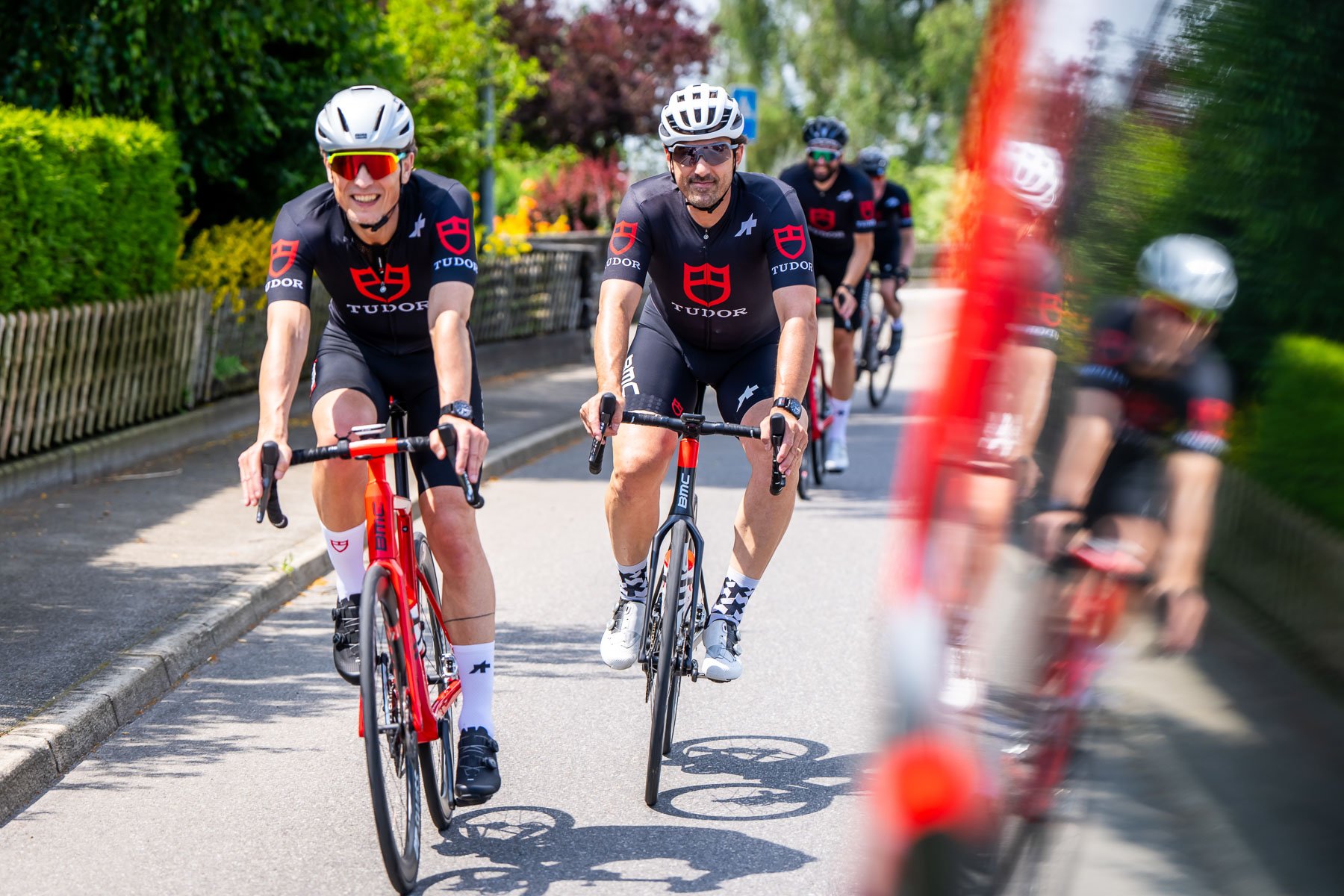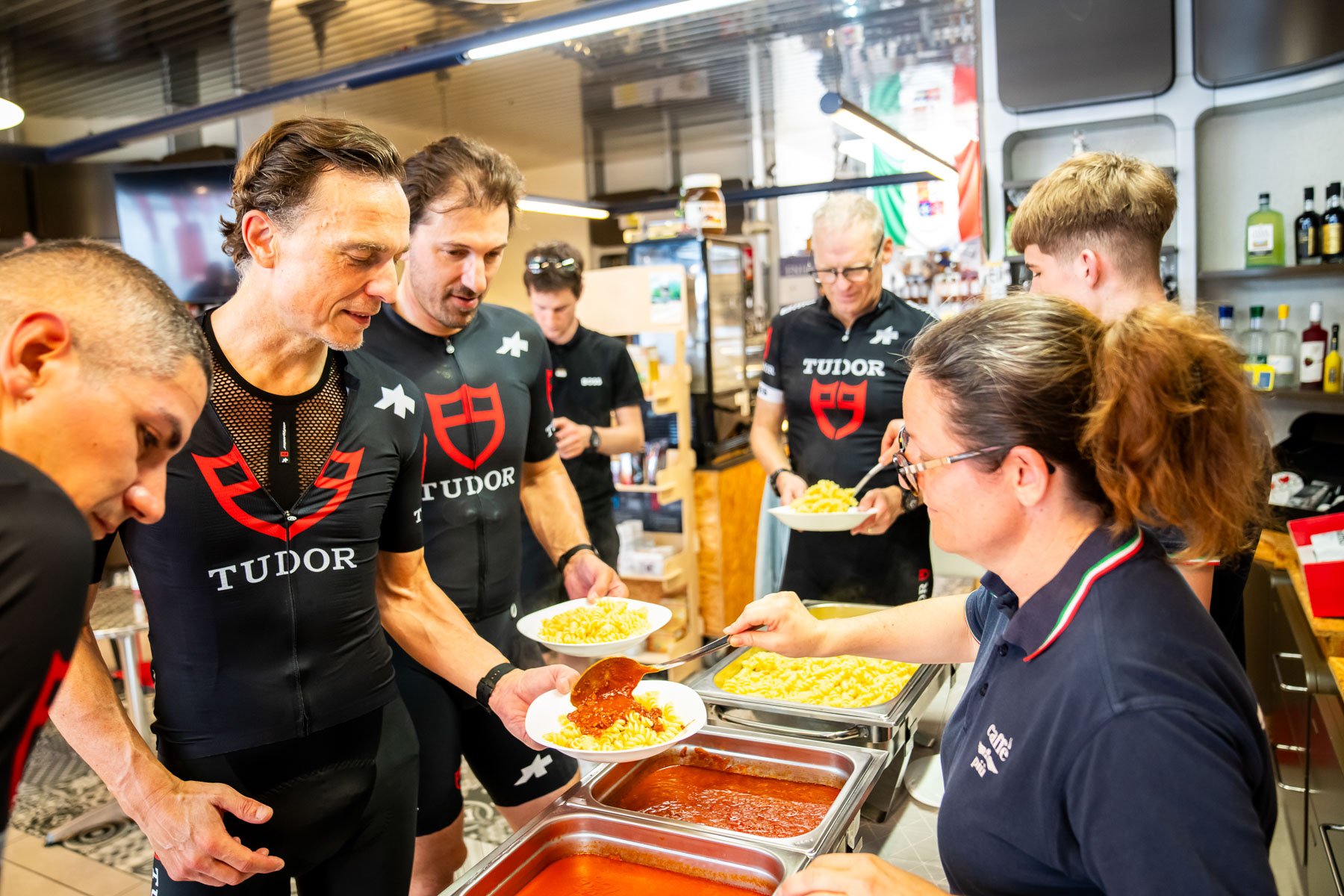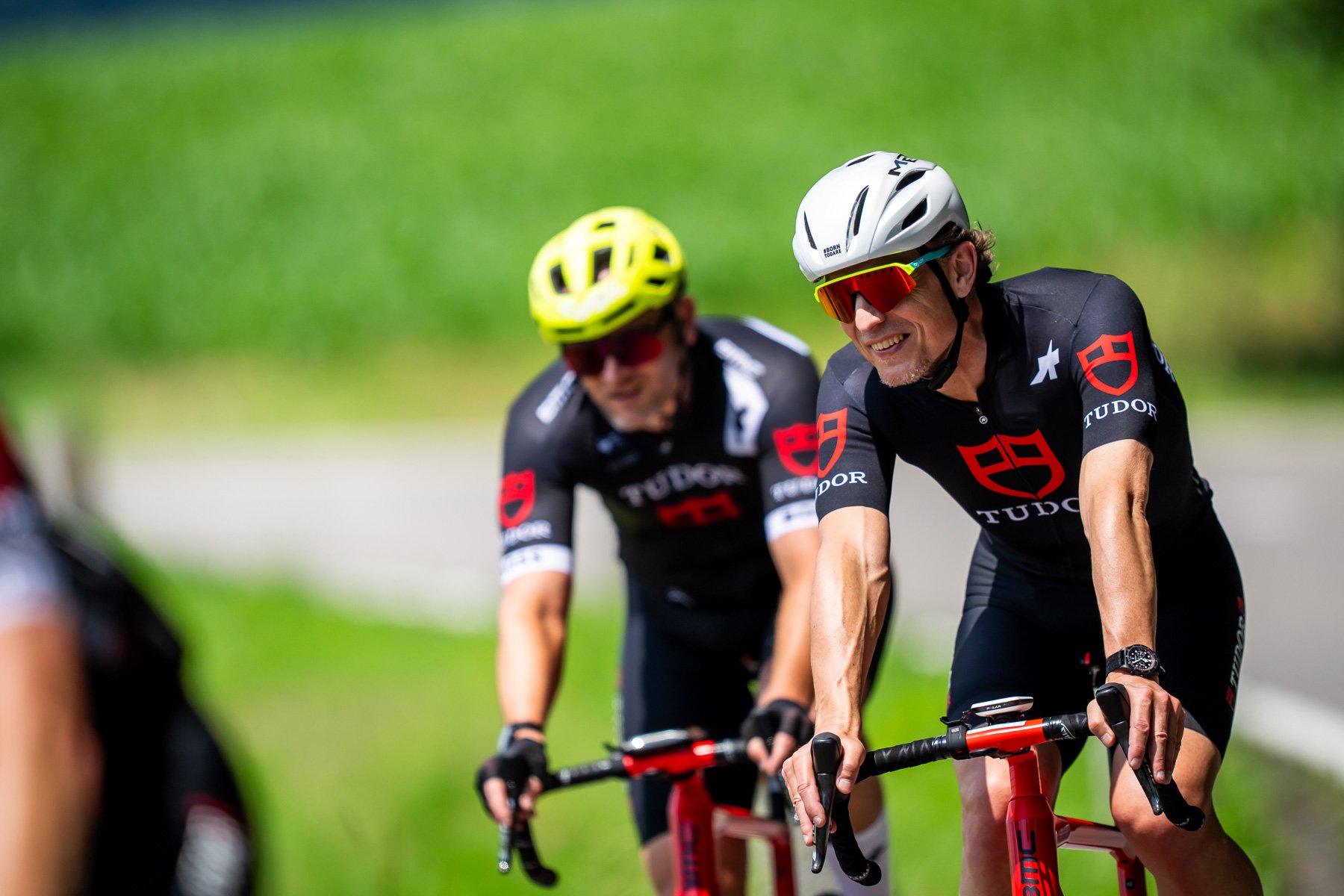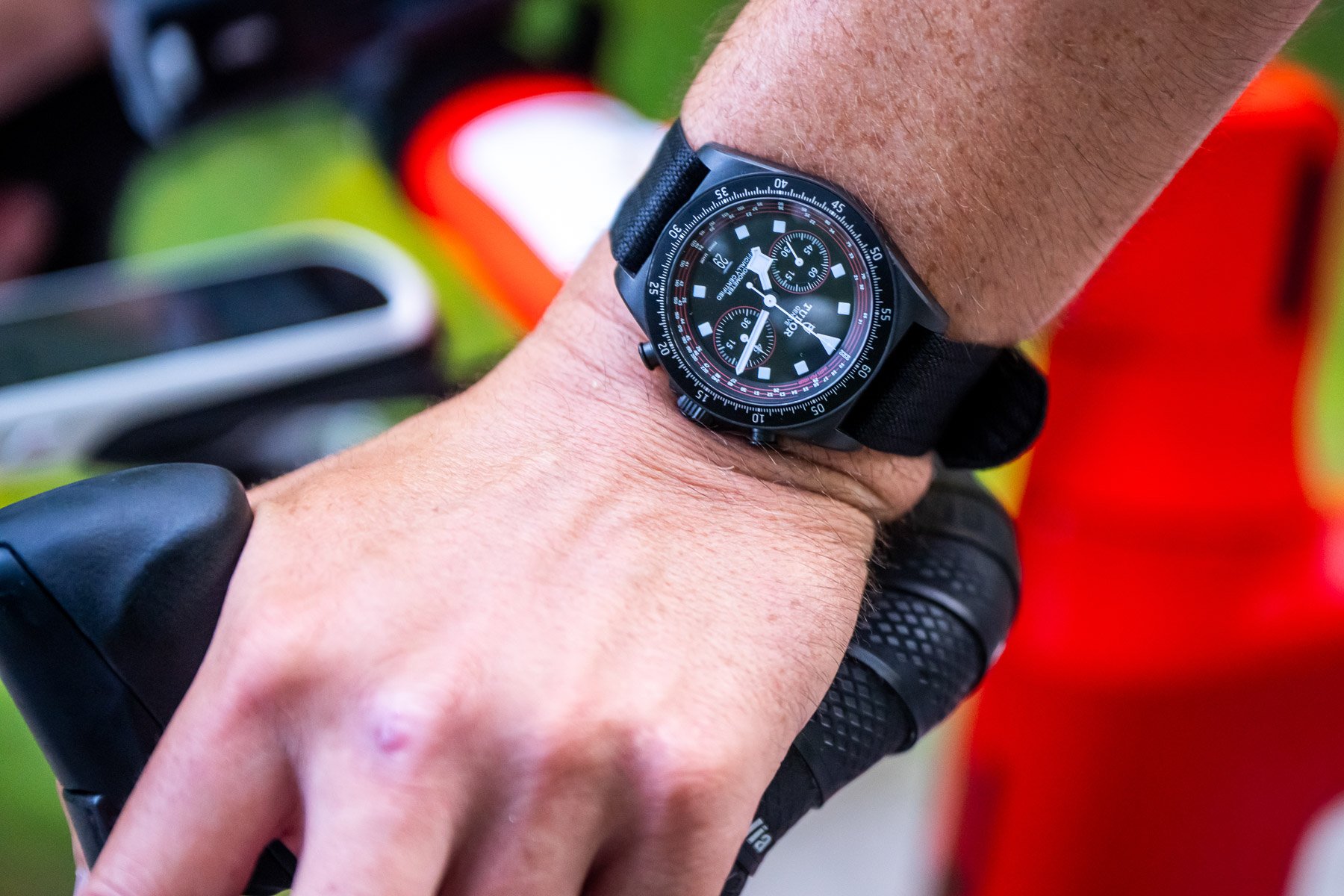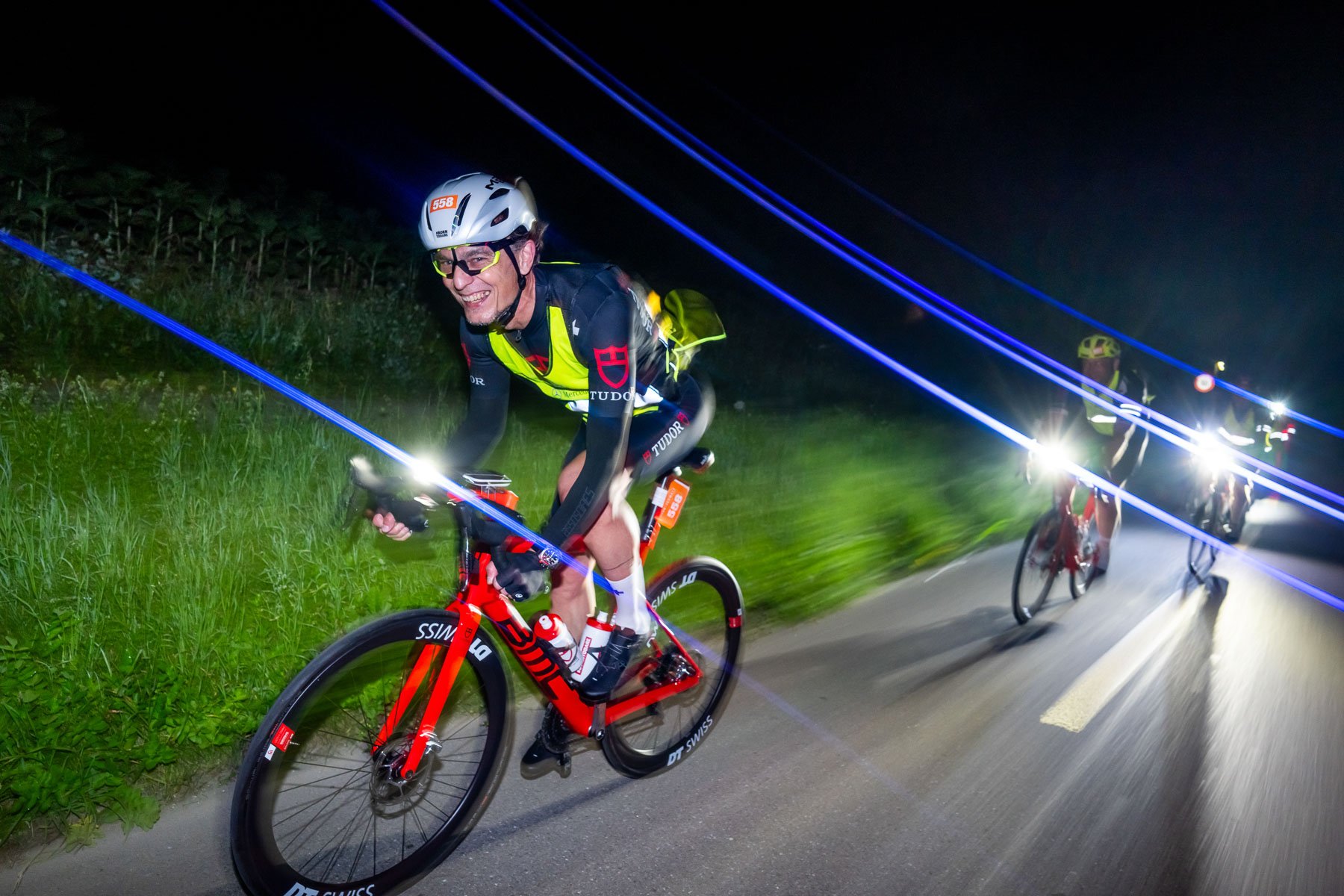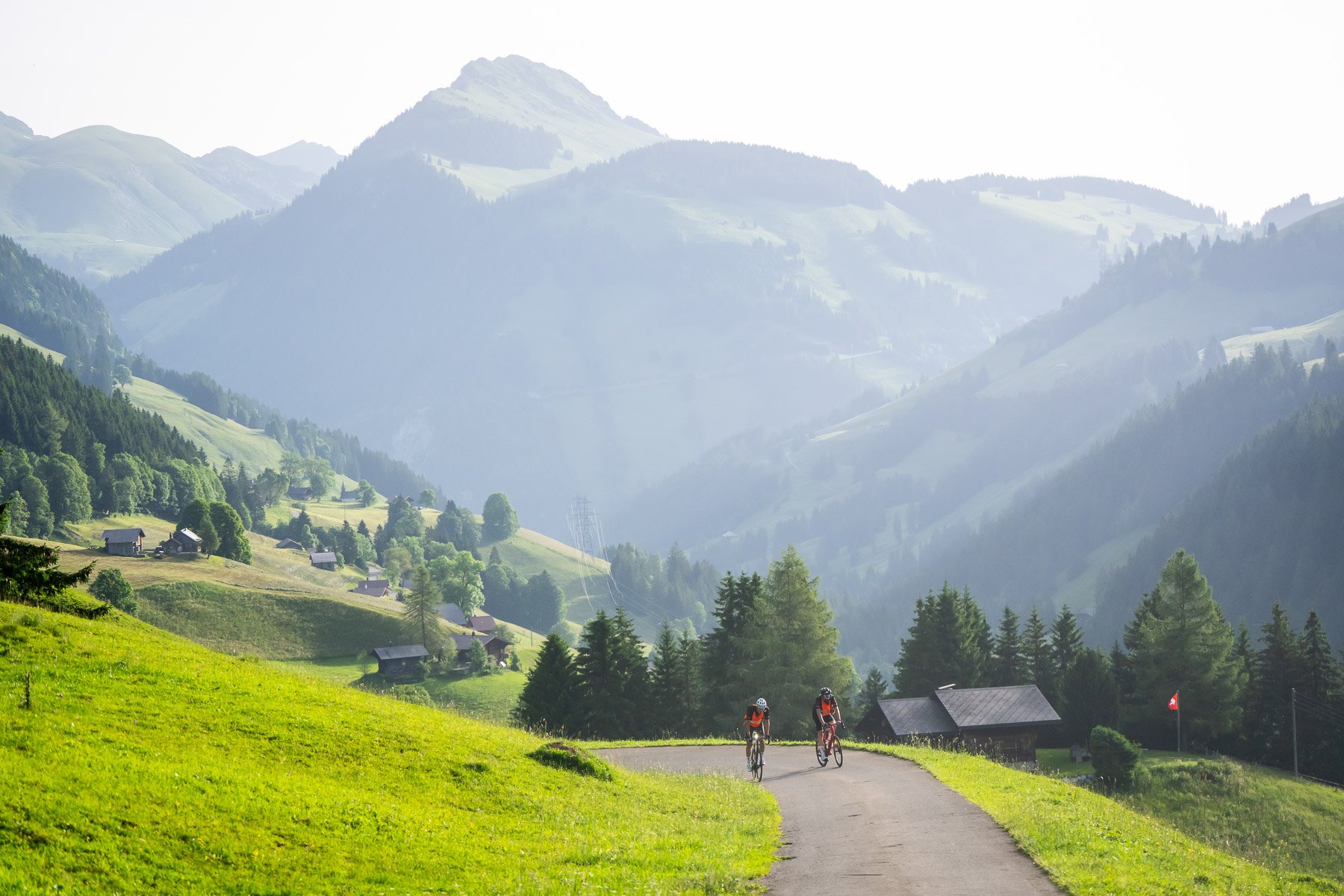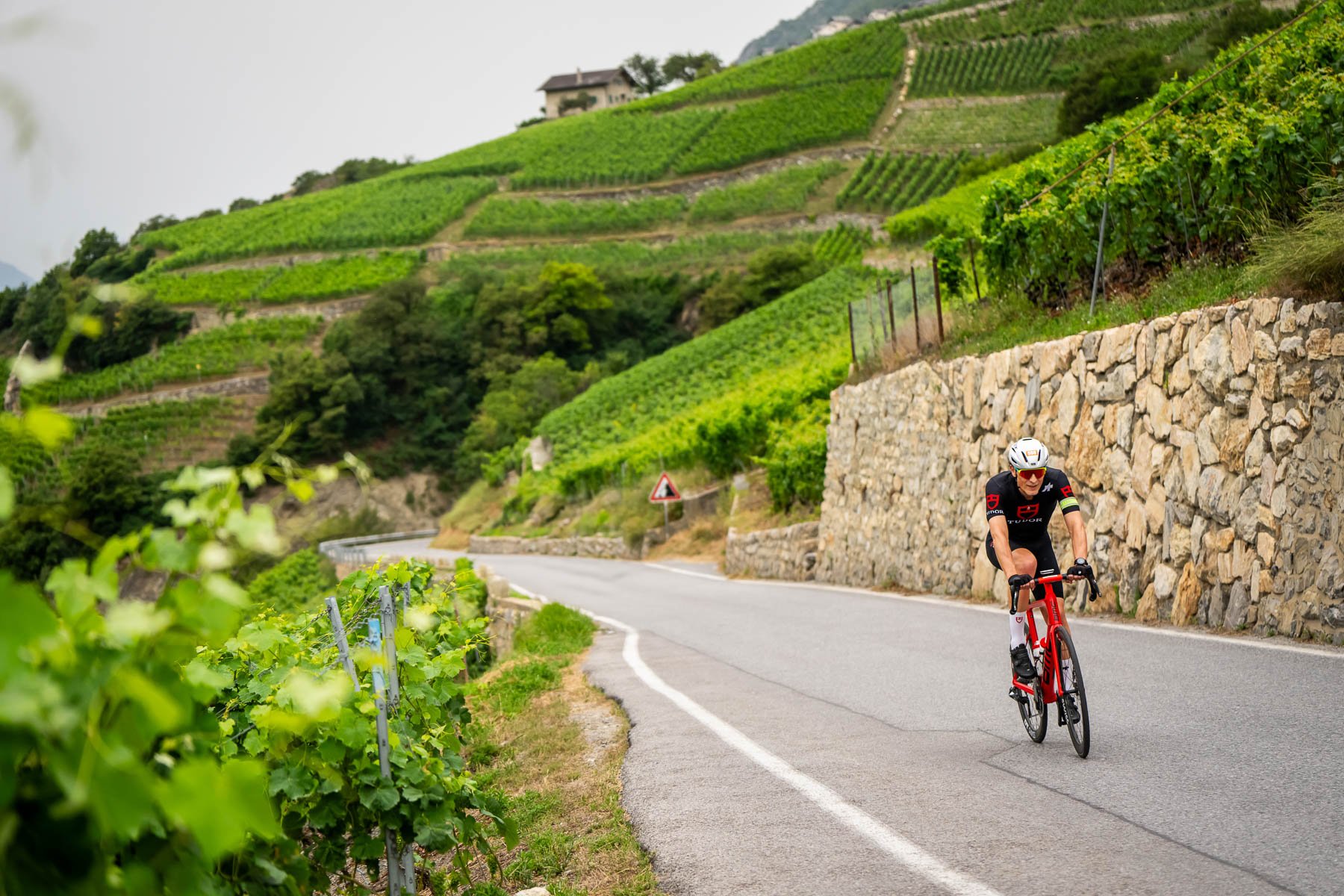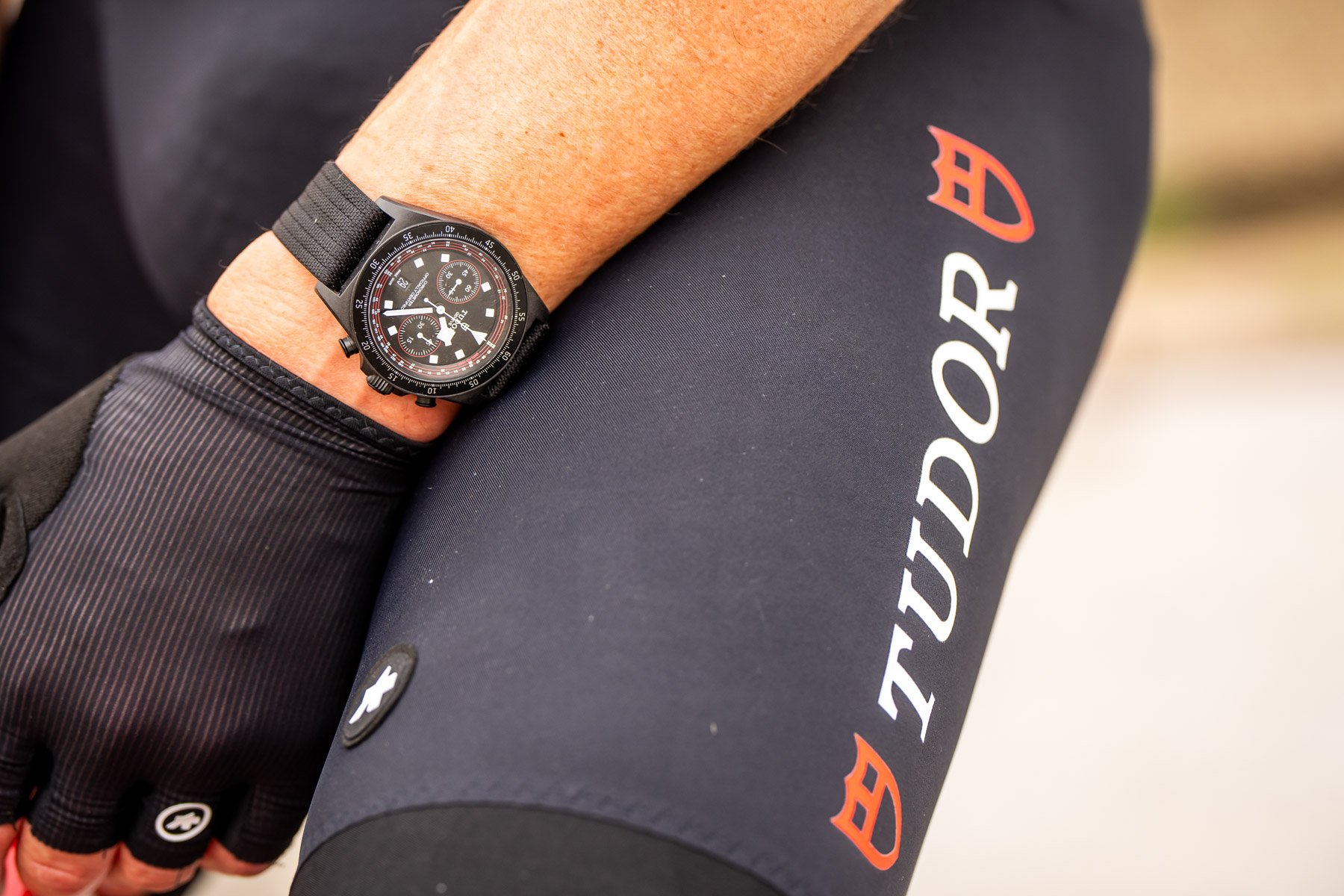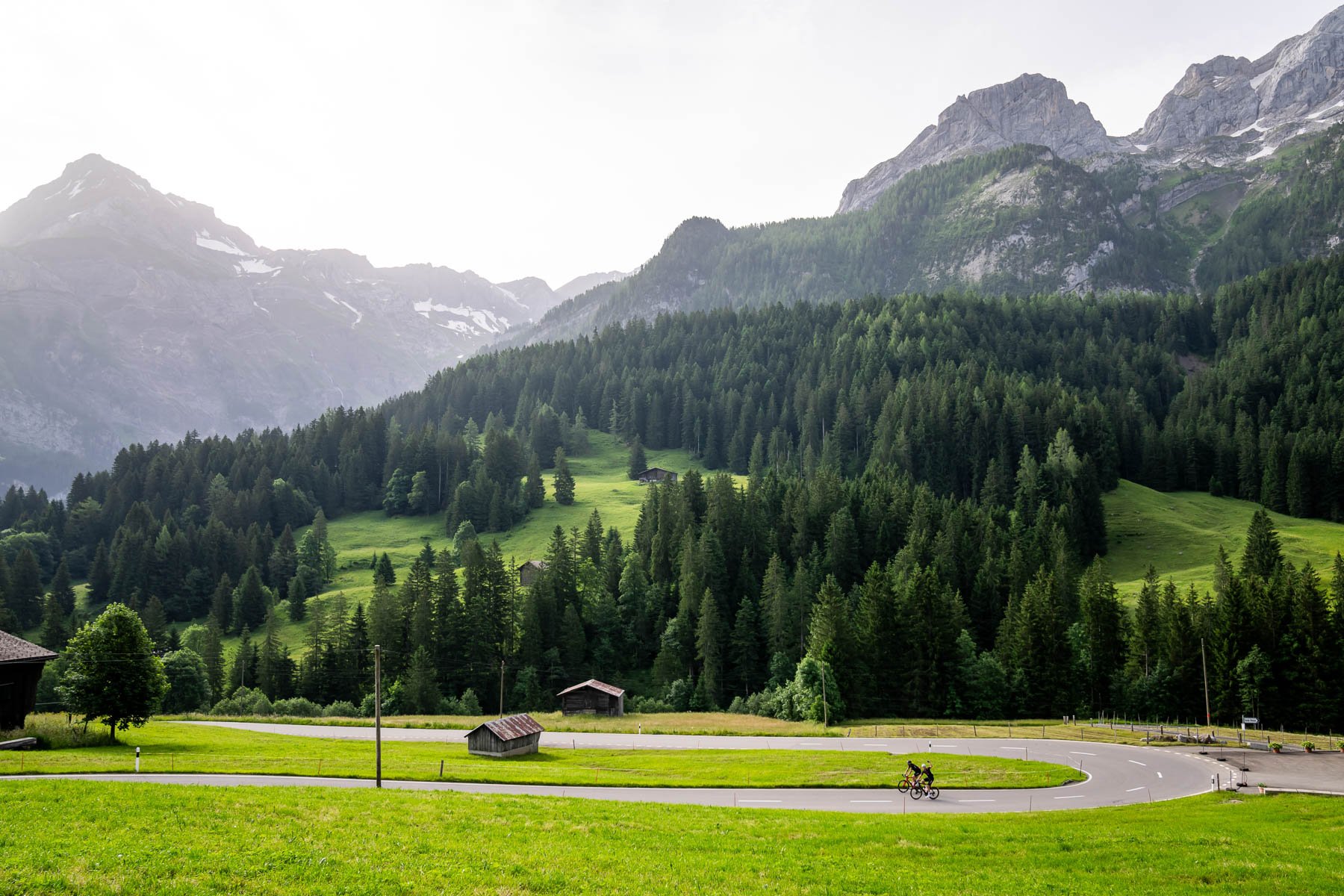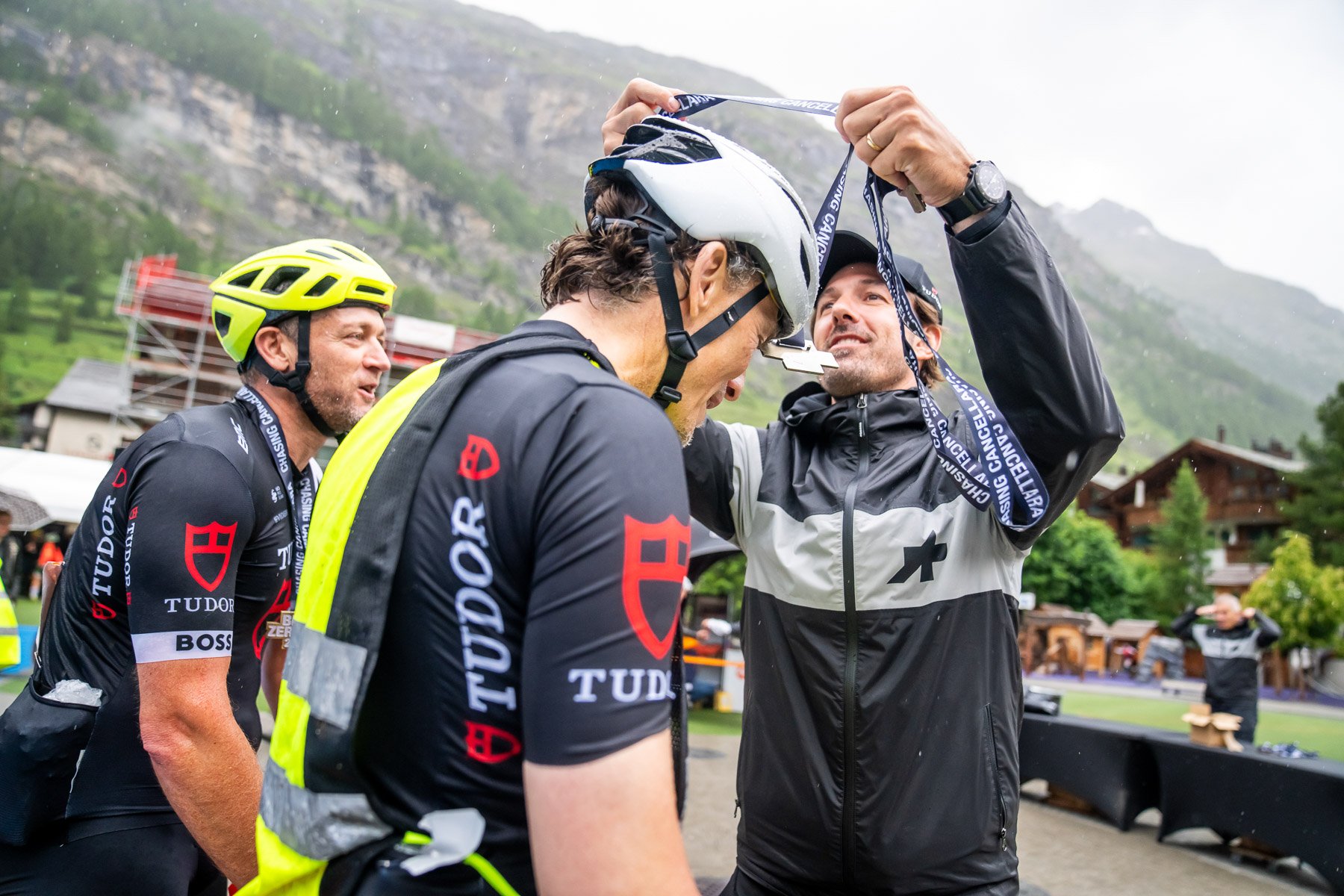Lex Goes Road-Testing The Tudor Pelagos FXD Chrono “Cycling Edition” And Himself
What’s the best way to test the Tudor Pelagos FXD Chrono “Cycling Edition” to the fullest? You take it out for a spin — a long one from Bern to Zermatt, for instance. The Chasing Cancellara Bern–Zermatt cycling event is a 310km endurance race that also has its participants overcome 5,000 meters of climbing. Fabian Cancellara is the Swiss cycling legend who now owns Tudor Pro Cycling, and this event brought the worlds of cycling and watches together most spectacularly. I strapped on the carbon fiber cycling chrono and went for a ride that led my teammate and me through the Gantrisch natural park, over the passes Mittelberg and Col du Pillon into the lower part of Valais to reach Zermatt in the shadow of the famous Matterhorn.
Preparation is everything when it comes to a 310km cycling adventure including 5,000 meters of ascent. It’s best to bring your good legs. And that was all I had to bring. Tudor, the main sponsor of the Tudor Pro Cycling Team, took care of the hardware and organizational side of things. That meant the kit, bike, food, and watch were all taken care of.
Even a casual warm-up ride on the Friday before the big event was on the schedule. The ride was led by the event’s name-giver Fabian Cancellara, who owns the cycling team and has won 88 races, including two Olympic time trials, three editions of the Tour of Flanders and Paris–Roubaix, and five opening stages of the Tour de France, donning the yellow leader’s jersey 29 days in total. He showed the Tudor invitees his home roads and invited them for a pasta lunch — carb loading is an essential part of cycling, you see.
Road-testing the Tudor Pelagos FXD Chrono “Cycling Edition”
The Friday ride was also a good moment to catch up with Fabian Cancellara and discuss not only cycling but watches as well. He was very happy with the special-edition Pelagos FXD Chrono in lightweight carbon. He also told me he very recently got the chance to acquire a Rolex Yacht-Master 42 in RLX Titanium — one of the perks of being part of the empire of The Crown, I guess.
Thanks to this shakedown ride, my teammate Xavier Markl from Monochrome and I — together, we were Team Snowflake — had a chance to get familiar with the different hardware and develop a proper race strategy. A race starts with a strategy, and ours was quite simple: we would start and finish together. I would take care of most of the climbs, and Xavier would release his power on the flatter parts. That was the plan. But “everyone has a plan until you’re punched in the mouth,” Mike Tyson once said, and the route would most certainly serve us with the equivalent of an uppercut. I’ll come back to that later.
The hardware we had at our disposal was the most solid part of Team Snowflake’s plan. The lightweight and stiff BMC Teammachine SLR01 outfitted with a wireless SRAM Red group set and DT Swiss wheels is a top-notch bike that looks fast standing still. The only thing keeping this bike from soaring up a hill is its rider. It’s a light, stiff, and agile bike, and the fit was nearly perfect, so it was more than good enough to go for a long, hilly ride. And what about the Tudor Pelagos FXD Chrono “Cycling Edition” (€5,390 / US$5,275) the team owner was raving about?
It had to be carbon fiber
Do you remember the team-only Black Bay Chrono I spotted in January 2023 while spending a few days with the Tudor Pro Cycling members during their training camp in Spain? Well, for me, that watch was impossible to wear during a bike race. Its 41 × 14.2mm black steel case was just too heavy and thick. The black and red NATO-style strap makes the watch even thicker. Consequently, the whole combo is a bit unstable. That’s not what you want on the wrist when riding a shaking and vibrating bike for hours and hours. Tudor also realized this, and that’s why the Pelagos FXD Chrono “Cycling Edition” got a case in a featherweight carbon composite. Sure, it might have a larger 43mm diameter, but it’s now also slimmer with a 13.2mm thickness. Crucially, the strap holding the lightweight watch firmly on the wrist is a now single-pass fabric strap.
I didn’t bring a scale, but I heard someone say the carbon-cased chronograph stays a bit under 80 grams, meaning it’s at least 20 grams lighter than its steel predecessor. You might think that shaving a millimeter here and a few grams there does not matter much. But marginal gains are a massive thing, at least in pro cycling. And when a watch brand is the title sponsor of a pro cycling team and the team members need to wear a team watch, that watch, just like the team bike, needs to be a cutting-edge piece of equipment. That is why the case with its fixed strap bars is made of a lightweight carbon composite and features a titanium case back.
Wearing the Pelagos FXD Chrono “Cycling Edition” on the road
The alarm rang at 2:15 AM, and after a cold shower to wake up, I strapped on the watch. I made sure the single-piece black fabric strap from the St. Etienne-based Julien Faure, who has been producing fabric straps for Tudor since 2010 using 19th-century Jacquard looms, felt nice and tight so that the watch wouldn’t jiggle.
And it never did. As a result, the watch felt like it wasn’t there when I didn’t need it. “Why do you need a mechanical watch when you have a cycling computer in front of you?” you may ask. That’s a fair question. I must admit that I didn’t use the watch’s specialized cycling functions. Yes, the cycling-specific tachymeter scale on the 45°-angled rehaut is a nice touch. I just never felt the need to operate the chronograph while riding/struggling uphill or bombing downhill while trying to steer clear of both cows and a crazy Porsche driver. But the matte black dial with red accents, and especially the square hour markers and “Snowflake” hands, sure came in handy on the last part of the Chasing Cancellara adventure.
Watch beats computer
Some 30 kilometers from the finish in Zermatt, the rain radar on Team Snowflake’s team car driver Alex’s smartphone displayed a lot of purple spots. He assured me he had never seen anything like that before and saw a purple spot moving in the direction of Zermatt. Of course, I was heading in the very same direction. Soon after seeing the ominous forecast on the screen, the sky turned dark, and the thunder started to rumble. It didn’t take long for the Mike Tyson-style rain to hit me hard and completely drench me. It got to the cycling computer as well. Water seeped through the gaskets and made the screen go all blurry, and after some warning bleeps, it completely blacked out and died. The watch told me the computer’s time of “death” was 5:00 sharp. In any case, I was riding blind.
A 33-minute loss timed to perfection
Speaking of riding blind, the overdose of water also made me take off my glasses because I couldn’t see where I was going. Unfortunately, it didn’t prevent me from taking a wrong turn — I was squinting hard because the rain turned into a wall of water. So I mistakenly took the road down to the raging river, over the bridge, and up a steep climb leading toward a small village. I found out the hard way that both roads leading out of the village were dead-end streets. Luckily, the girl at the bus stop in the middle of the hamlet who saw me passing twice halted me and told me in hard-to-understand Swiss German that I needed to go back over the bridge, up the hill, and follow the main road to Zermatt.
I don’t know how many extra kilometers I rode, but the watch told me how much time the energy-consuming detour cost me. The watch case is water resistant to 100 meters, you know, and it keeps the manufacture caliber MT5813 working flawlessly. The chronometer-certified movement told me I had lost 33 minutes.
The final kilometers with the Pelagos FXD Chrono “Cycling Edition”
Not only did I lose 33 minutes I would never get back, but I also lost my good legs. Before taking a right instead of just going up, the rain hadn’t harmed me at all. My spirits were up, and my legs felt surprisingly fresh. Yes, the day had been long and hard, but I could smell the barn, so to speak, and that helped me to dig deep one last time.
I quickly found out I had dug too deep while making my way back to the right route. Plus, since my cycling computer didn’t tell me how far I was from the finish, I didn’t know how to dose my last bit of energy. However, because of the watch on my left wrist, I did know that the time lost was not going to be a problem. There were a couple of hours to spare.
To my relief, the town of Täsch proved to be very close. Täsch is the spot where all the cars park because they’re not allowed to go up to Zermatt. And from that town, not only would my teammate Xavier join me, but it also meant the finish was well within striking distance. The last six kilometers were cold, wet — my hands had turned blue, and my finger looked like raisins — and hindered by road work. Nevertheless, Team Snowflake rolled across the finish line with smiles on our faces. Fabian Cancellara gave us each a medal and a beer, and all was good.
The experience of a lifetime
Riding Chasing Cancellara with fellow Snowflake Xavier and the lightweight Tudor Pelagos FXD Chrono “Cycling Edition” with its clear dial and very functional Snowflake hands, was an experience of a lifetime. It left me with one desire, though. No, it wasn’t to do the whole ride all over again. That’s for next year, maybe.
Rather, I desire to ride again soon with the Pelagos FXD Chrono “Cycling Edition” on my wrist. The watch was there when I needed it and was absent when I was in the zone. The watch did what it had to do, and the fabric strap dried up before I did once back in the hotel. Also, the watch might be a cycling watch, but it isn’t gimmicky at all, so it probably won’t get old soon. I was intrigued by the watch when it came out, and it proved better than I anticipated. In other words, my next bike might be a watch.

